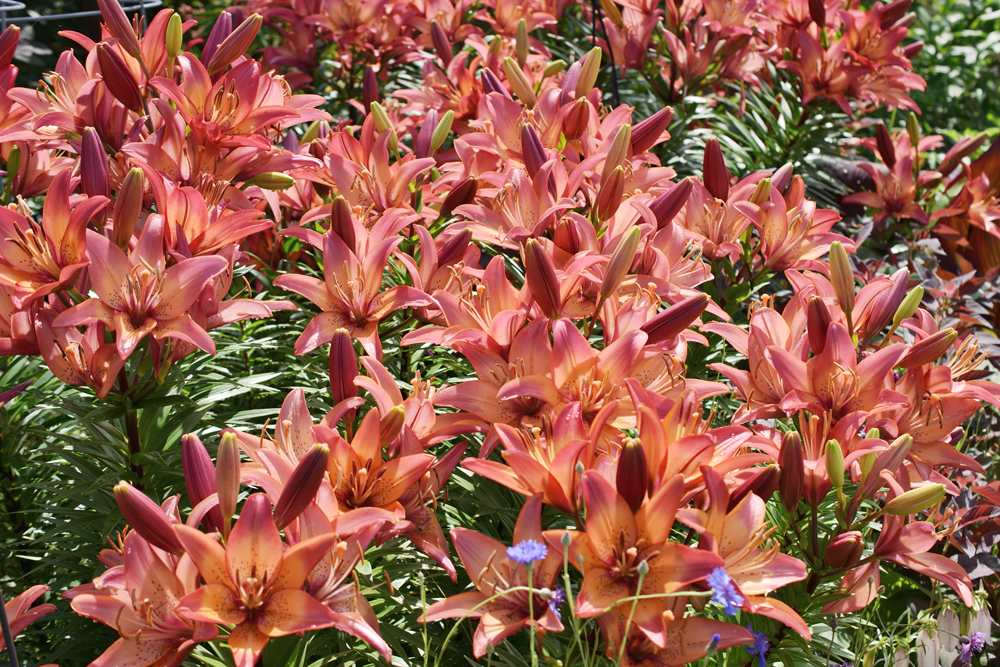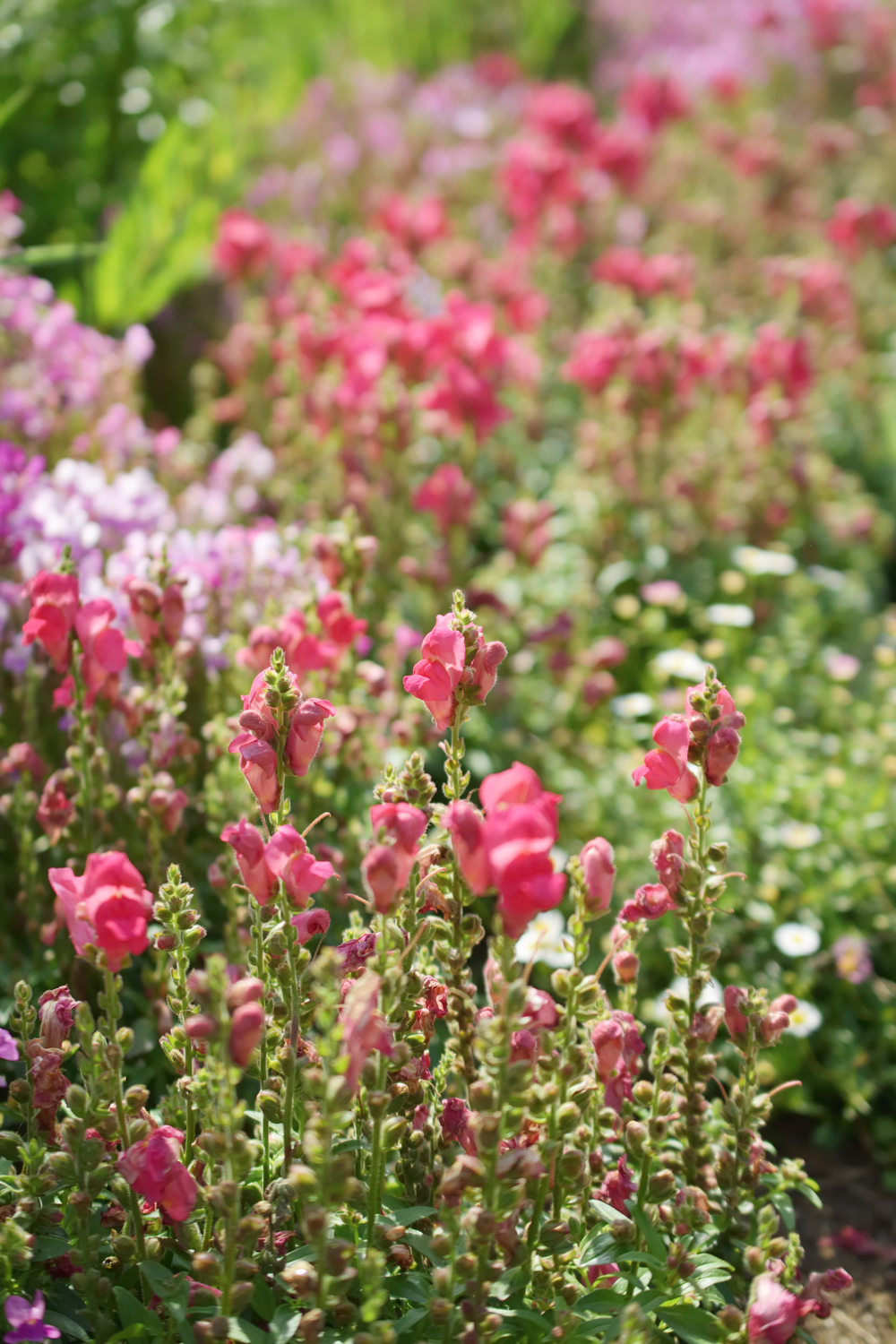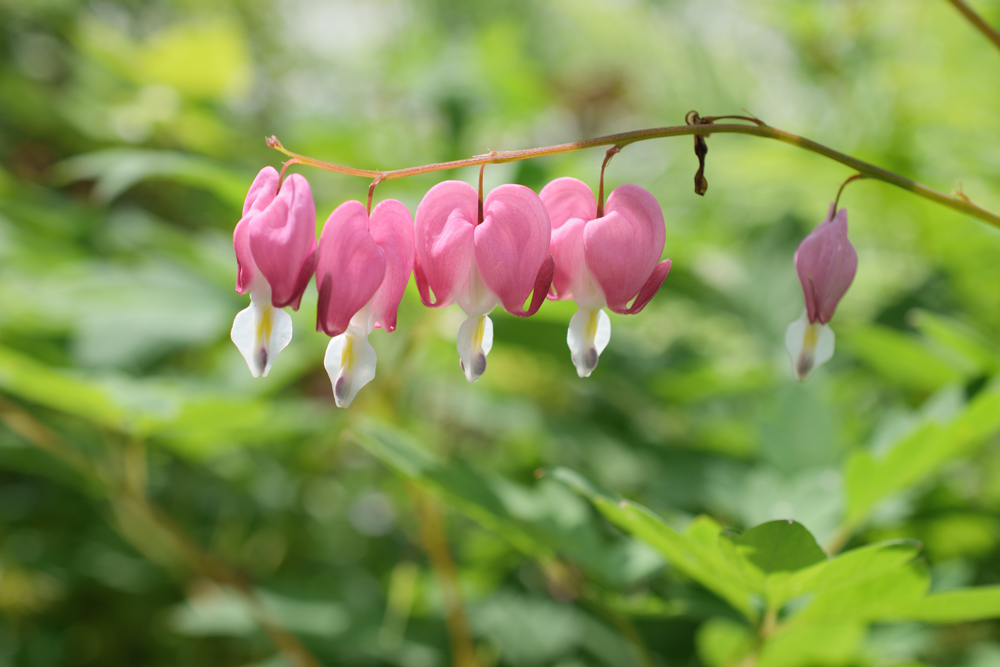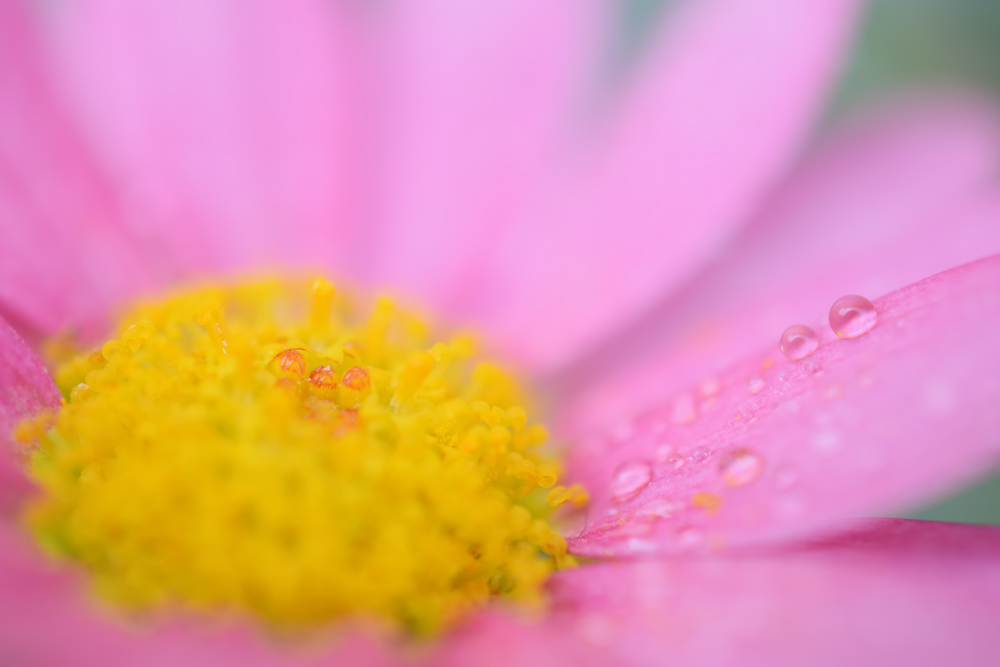NIKKOR - The Thousand and One Nights No.88

A compact DX-format normal Micro lens
AF-S DX Micro NIKKOR 40mm f/2.8G
In this tale, we'll discuss a DX Micro lens released in 2011, the AF-S DX Micro NIKKOR 40mm f/2.8G. What was the designer's intent behind this second DX Micro lens?
by Kouichi Ohshita
The DX lens lineup
The DX lens lineup was launched with the AF-S DX Zoom-Nikkor 12-24mm f/4G IF-ED (released in 2003) introduced in Tale 68, and soon followed by the AF-S DX Zoom-Nikkor 18-70mm f/3.5-4.5G IF-ED and AF-S DX Zoom-Nikkor 17-55mm f/2.8G IF-ED, both released in 2004 to coincide with the release of the Nikon D70. The lineup has expanded year by year, but most DX lenses have been standard zoom lenses or telephoto zoom lenses intended to be used alongside the standard zoom lenses. This is probably because the best-selling digital-SLR cameras at the time were relatively low-priced models like the D70 and D50, and Nikon probably prioritized development of kit lenses for these cameras. There was also a rich lineup of NIKKOR F lenses at the time. It was likely assumed that the new DX lenses could be used with lenses already in existence.
However, as the D-SLR lineup expanded to include the D40, D200, and D300, there was demand for DX lenses by the new users of these cameras. In addition, the knowledge gained through the development of DX telephoto zoom lenses helped us develop new lenses. Until that time, the dedicated DX design was effective at reducing the size and cost of wide-angle lenses and standard zoom lenses, but was thought ineffective at reducing the size of telephoto lenses. However, actually designing a DX telephoto zoom lens proved that both size and cost could be reduced beyond expectations. We wanted to provide lenses that could be used alongside zoom kit lenses to convey the enjoyment in using different lenses. A fast (bright) prime lens that allows users to enjoy beautiful bokeh at maximum aperture, or a Micro lens that allows users to get close enough to take pictures of small objects such as flowers was thought ideal for this purpose. It also had to be as compact, lightweight, and inexpensive as possible to encourage people to purchase and use it. The AF-S DX Micro NIKKOR 40mm f/2.8G was planned with all of this in mind.
AF-S DX Micro NIKKOR 40mm f/2.8G
This lens was designed by Motohisa Mouri. Mouri started working at Nikon five years after I did. The two of us were mainly involved in designing optical systems for compact film cameras and viewfinders for SLR cameras. There was often great overlap in our work. He is one of the designers I have known for a long time. He was one of the junior employees I taught how to design viewfinders for compact cameras, but when it came to designing SLR viewfinders, Mouri had more experience than I. When I was put in charge of designing the viewfinder for the Pronea S and D1, it was Mouri who taught me many of the secrets behind SLR viewfinder design. He is also one of my mentors.
In addition to the AF-S DX Micro NIKKOR 40mm f/2.8G, Mouri was also involved in designing a fisheye lens for the NIKONOS RS. Thirty years ago, when compact film cameras were at their peak, Mouri and I spent a considerable amount of time taking test shots with competitors' compact cameras. We would then look at prints of the photos we took and discuss their characteristics, as well as our impressions of using the cameras. We would decide that a particular camera's AF was not very accurate, that a particular camera worked well with a certain type of film, or that performance at the edges of the frame was good at wide-angle positions, but not at telephoto positions, and so on. Mouri probably used the knowledge we acquired this way in designing interchangeable lenses.
Work on AF-S DX Micro NIKKOR 40mm f/2.8G design began in the spring of 2009, and the design was finalized in the spring of the following year. During that time, he designed several lenses, including a proposal for one equipped with a VR mechanism. Of these, a Micro lens that was compact and lightweight enough to be used with a DX camera, and priced reasonably enough for, and with optics that conformed to, the "one more lens" concept was selected. After development of prototypes and several mass-production trials, the AF-S DX Micro NIKKOR 40mm f/2.8G was released in August of 2011.
Lens construction
Fig. 1 illustrates a cross section of the AF-S DX Micro NIKKOR 40mm f/2.8G.

This lens is comprised of three groups; the third group is fixed, and the first and second groups move while changing the space between them with focusing, maintaining superior performance even with life-size shooting at a minimum focus distance. This explanation alone makes the lens seem similar to the AI AF Micro-Nikkor 60mm f/2.8S introduced in tale 74, but configuration of the AF-S DX Micro NIKKOR 40mm f/2.8G lens' first and second groups distinguishes it from the other lens. While the AI AF Micro-Nikkor 60mm f/2.8S was based on a double Gauss structure, the AF-S DX Micro NIKKOR 40mm f/2.8G is based on a retrofocus structure. As the optical system has a concave third group behind the two groups, these three groups are arranged in a symmetrical (concave-convex-concave) structure that effectively corrects distortion and suppresses short-distance aberration fluctuations. In addition, despite the short focal length of 40 mm, adopting a retrofocus structure for the first and second groups allows for sufficient back focal length so that the third group can be arranged between the first two groups and the imaging surface.
As I mentioned in Tale 74, an important aspect of Micro lens design is to suppress the amount of focus-lens movement, and to keep movement of the first group, which moves the most, to just over 3 cm. Like that of the 60mm Micro lens, the lens barrel is double layered with inner and outer tubes, which restricts extension of the outer tube and contributes to a more compact appearance.
In terms of aberration, this lens exhibits very little distortion, as is typical of a Micro lens, and the shape of the aberration does not change throughout the focus range, from infinity to a 1:1 reproduction ratio. Conventional Micro lenses, which were designed so that the entire lens extended with focusing, exhibited spherical aberration that increased as the shooting distance grew shorter. With this lens, however, configuration of the first and second groups was completely changed to a retrofocus structure, which reduced the increase in spherical aberration as the shooting distance decreased. The AF-S DX Micro NIKKOR 40mm f/2.8G is also unique in its correction of spherical aberration and coma in that it tends to be insufficient at distances from infinity to close-up, with these aberrations remaining. Therefore, a small amount of flare can be expected with shooting at maximum aperture, but so can beautiful background bokeh. This is because it was assumed the lens would primarily be used to photograph small objects, such as flowers and pets. Surely Mouri designed the lens for these characteristics.
Lens rendering
As always, let's take a look at the rendering characteristics of this lens with actual images. As the topic of this tale is a DX lens, I used it with the D3300 to capture sample images. The lens itself is very compact and goes well with the small DX camera. However, as is the case with Micro lenses, the live view display is often used to precisely compose the image and focus on the intended spot. It is also often used to shoot from low angles, so I thought the lens might be better matched with a D5000 series camera with a vari-angle monitor.
The important thing to keep in mind when using this lens is to control camera shake. Many camera lenses are now equipped with a VR mechanism, but this lens, for which a compact size and low price were the priorities, is not, unfortunately, equipped with a VR mechanism. Further, when capturing close-up shots, users must consider not only camera shake, but also subject movement caused by the wind and other factors. Therefore, the fastest shutter speed possible should always be used.

D3300 and AF-S DX Micro NIKKOR 40mm f/2.8G at maximum aperture, 1/2000 s, ISO 100; processed with NX Studio

D3300 and AF-S DX Micro NIKKOR 40mm f/2.8G at f/8, 2.5 s, ISO 400; processed with NX Studio
Sample 1 is a distant view captured at maximum aperture. One of the characteristics of this lens is that it was designed so that spherical aberration and peripheral coma flare are under-corrected with shooting at any distance. Therefore, if you look closely, you can see a slight amount flare that starts at the center of the frame and increases toward the edges of the frame. I recommend stopping down the aperture to between f/5.6 and f/8 to capture crisp, high-contrast photos. As one would expect of a Micro lens, there is very little distortion or lateral chromatic aberration, so users need not concern themselves with distortion correction or enabling lateral color aberration correction when processing RAW images. The following examples were also developed with distortion correction and lateral color aberration correction disabled. As you can see from this sample, there is also an abundance of peripheral illumination, even at maximum aperture.
Sample 2 is a night landscape captured at f/8. Extremely sharp and clear images all the way to the edges of the frame can be achieved by stopping down the aperture to f/8. Because this image is composed primarily of straight lines, it shows how little distortion is generated.

D3300 and AF-S DX Micro NIKKOR 40mm f/2.8G at maximum aperture, 1/1600 s, ISO 100; processed with NX Studio

D3300 and AF-S DX Micro NIKKOR 40mm f/2.8G at f/5.6, 1/500 s, ISO 100; processed with NX Studio
Sample 3 is a photo of lilies captured at maximum aperture from a medium-range distance. The best feature of this lens is the beautiful background bokeh it produces. As this sample demonstrates, the more the distance from the in-focus lily bud at the center of the frame increases, the more flare smoothly blurs the edges of bright spots, gently blending them with darker areas for stunning bokeh with no edges. This characteristic was very important to Mouri as Micro lenses are primarily used to photograph flowers. On the other hand, foreground bokeh exhibits a red fringe that makes the image look a bit noisy, but generally speaking, the bokeh in this sample is flawless.
Sample 4 is a photo of lilies taken with the aperture stopped down to f/5.6 for more consistent rendering throughout the frame. If you turn your attention to the cornflowers in the foreground, you'll notice that the red fringes around bokeh that were visible at maximum aperture have disappeared, and that the foreground bokeh tends to be shaped more like a ring. Small rings are noticeable in this area, but intensifying foreground blur softens edges for more pleasing bokeh. In addition, it can be seen in Sample 3 that the bokeh at the extreme corners of the frame exhibits inconsistent brightness due to sagittal coma. This issue was resolved in Sample 4 by stopping down the aperture to f/5.6.

D3300 and AF-S DX Micro NIKKOR 40mm f/2.8G at maximum aperture, 1/1250 s, ISO 100; processed with NX Studio

D3300 and AF-S DX Micro NIKKOR 40mm f/2.8G at f/8, 1/160 s, ISO 100; processed with NX Studio
Sample 5 is a photo of snapdragons captured at a shorter distance than was Sample 3. While the image was captured at maximum aperture, the size of background blur is increased due to the shorter shooting distance. The quality of bokeh exhibited by this lens remains almost the same, regardless of the shooting distance, as is demonstrated by the beautiful background bokeh in this image. Further, as bokeh increases, the tendency for double-line blur in the foreground and noisy background blur at the four corners of the frame is reduced for more beautiful bokeh.
Sample 6 is a photo of columbine captured at an even shorter distance. I stopped the aperture down to f/8 to capture the unique three-dimensional appearance of columbine flowers. Columbine flowers are flashy, and while they appear large, they are actually only a few centimeters in diameter. Since this photo was taken at such a short distance, the background is heavily blurred even with the aperture stopped down to f/8.

D3300 and AF-S DX Micro NIKKOR 40mm f/2.8G at f/5.6, 1/500 s, ISO 100; processed with NX Studio

D3300 and AF-S DX Micro NIKKOR 40mm f/2.8G at maximum aperture, 1/125 s, ISO 100; processed with NX Studio
Sample 7 is a photo of bleeding hearts captured with the aperture stopped down to f/5.6. The pink, heart-shaped flowers typical of plants in the Dicentra species are quite cute. This image was shot at a reproduction ratio of about 1:5-1:6, which translates to 1:3.3-1:4 with conversion to 35mm [135] full-frame format. DX Micro lenses have a smaller frame size, so even at the same reproduction ratio, magnification is 1.5x that of a full-frame (FX) Micro lens. This makes the DX-format advantageous for making small objects look larger.
Sample 8 is a close-up photo of a marguerite daisy captured with the AF-S DX Micro NIKKOR 40mm f/2.8G at maximum aperture and a reproduction ratio of 1:1. Marguerites are just under 5 cm in diameter, and the ability to magnify them this much is an effect unique to this lens. In addition, as this lens has a filter attachment size of 52 mm, using it with the BR-2A Macro Adapter Ring introduced in Tale 86 enables the capture of images at reproduction ratios greater than 1:1 (life size).
The most appealing characteristics of the AF-S DX Micro NIKKOR 40mm f/2.8G for micro photography are its speed (brightness) and superior performance. While the AI AF Micro-Nikkor 60mm f/2.8S introduced in Tale 74 had an effective f-number of f/5 at the 1:1 reproduction ratio, this lens is even half a stop faster at f/4.2. In contrast to previous Micro lenses with which spherical aberration increased and performance dropped as the shooting distance decreased, this lens exhibits consistent spherical aberration at reproduction ratios up to 1:1 although axial chromatic aberration increases. Therefore, superior performance is demonstrated with life-size shooting at maximum aperture. The yellow tubular parts at the center of the flower and water droplets in Sample 8 are clearly rendered.
The lens does have its weaknesses, though. One is a short working distance. With close-up shooting, the distance from the tip of the lens barrel to the subject is only about 3.5 cm. When the hood is attached, the distance is even shorter at approximately 2 cm. When shooting close-ups at a reproduction ratio of nearly 1:1 (life size), particular care with lighting must be taken. The hood must be removed, and the user must be sure the tip of the lens does not touch the subject and that the camera and/or lens does not cast a shadow on the subject. Another weakness of the AF-S DX Micro NIKKOR 40mm f/2.8G is that the reproduction ratio changes significantly with the slightest change in shooting distance. Therefore, I would recommend using manual focus for close-ups. As those who actually use this lens are well aware, the distance immediately following the minimum focus distance (0.163 m) on the focus distance indicator is 0.17 m. This small difference of 7 mm in shooting distance results in a large change in the reproduction ratio from 1:1 to 1:1.4. At a reproduction ratio of 1:2, the shooting distance is approximately 0.19 m, and the difference in shooting distance from a reproduction ratio of 1:1 is just under 3 cm. As I've shown, the reproduction ratio changes significantly with even a small change in shooting distance. Therefore, when deciding on the shooting range and composition, it is best if the user first decides on the focus position, and then focuses by adjusting the distance between the subject and the lens. The focus ring or autofocus should only be used for the final adjustment. In principle, these two drawbacks are difficult to avoid with Micro lenses with a short 40 mm focal length. I hope you will consider them two of the unique characteristics of this lens.
Micro lens characteristics
This lens, released in August 2011, was not a tremendous hit, but it is a long-lived lens that continues to be sold in 2023.
When many people think of Micro lenses, they tend to think they are difficult to use, or that they are expensive lenses used only by professionals, and may avoid them. However, if you simply think of them as the lenses that allow users to get closest to their subjects, then they may not seem so unique or specialized. It is refreshing and surprising to get close to an object and perhaps see details not visible with the naked eye. Micro lenses allow users to appreciate the beauty of the microscopic world. In this tale, I have talked about difficulties with micro photography, including the precise focusing required and the need to eliminate camera and subject shake/motion, but when photographing something roughly the size of a postcard, there is no need to think too much or to see Micro lenses as anything other than an extension of normal photography. To shoot at higher reproduction ratios, I would recommend taking a large number of shots and then choosing those that are in focus and don't exhibit the blurring effects of camera shake or subject movement. I want users of this lens to enjoy stress-free Micro photography.
The rendering of background bokeh demonstrated by this lens is clearly different from that of previous Micro lenses. It feels like a new generation of Micro lens with which the focus of design shifted from an emphasis on resolution with flat subjects to an emphasis on the background bokeh and three-dimensional rendering of subjects captured in the field. While the lens can be a little difficult to control when shooting at the minimum focus distance, it is an appealing, compact lens that offers beautiful bokeh.

NIKKOR - The Thousand and One Nights
The history of Nikon cameras is also that of NIKKOR lenses. This serial story features fascinating tales of lens design and manufacture.

